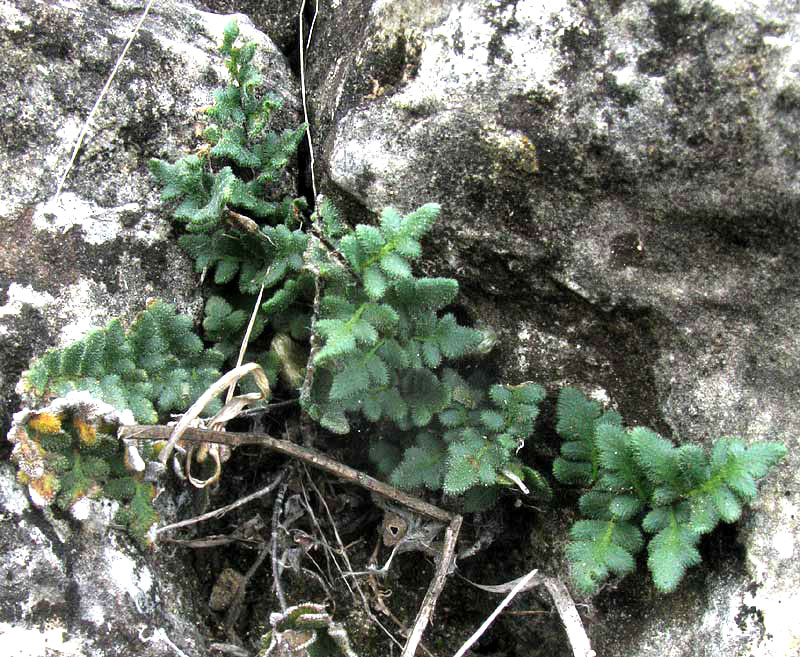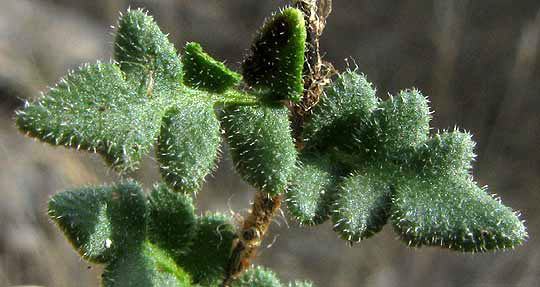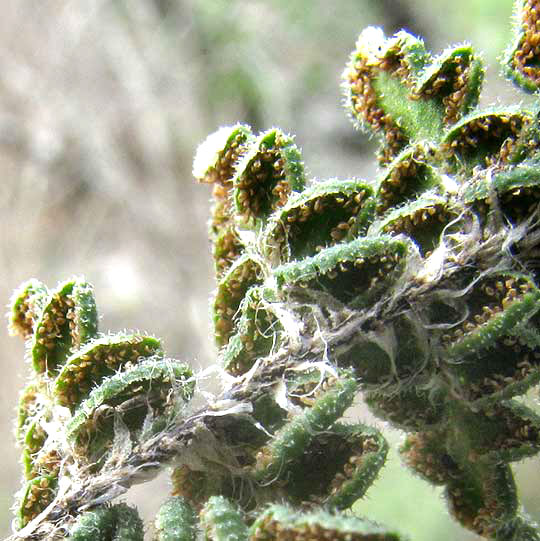Excerpts from Jim Conrad's
Naturalist Newsletter

from the February 10, 2013 Newsletter issued from the valley of the Dry Frio River in northern Uvalde County, southwestern Texas, on the southern border of the Edwards Plateau; elevation ~1750m (~5750 ft); N29.62°, W99.86°; USA
ROUGH LIPFERN
This week's lip fern, much smaller than the other species we've found here, is shown emerging from a crack in limestone above. The fronds in that picture were only about two inches long (5cm) and their upper surfaces were covered with slender, stiff, short hairs as shown below:

Another important field mark for this species is that the blackish rachis from which frond segments, or pinnae, arise is densely mantled with white, broadly based scales as shown below:

In that picture you can also see the brownish sporangia peeping from inside the leaflets' curled-under margins, in typical lip fern manner.
This is CHEILANTHES HORRIDULA*, and despite its species name really I can't find anything horrendous about it. Its hairs aren't stiff enough for the fern to be prickly or unpleasant in any way. Its main English name is Rough Lip Fern. It's yet another endemic species, in the US found only in parts of Texas and a tiny sliver of southern Oklahoma, plus it occurs in arid uplands of northeastern Mexico.
Ecologically one service the Rough Lip Fern performs is that where it roots in limestone cracks, often debris collected around its stems attracts tiny arthropods who shelter there. Then other tiny critters come to prey on the arthropods, and before you know it you have a tiny ecosystem structured around a little fern most folks wouldn't notice.
I'm glad I noticed it, though, because it's a good find, an obscure species not found in many places, a being with genetic information exquisitely fine-tuned for a specific small spot on Earth, and a specific manner of being craving cracked limestone.